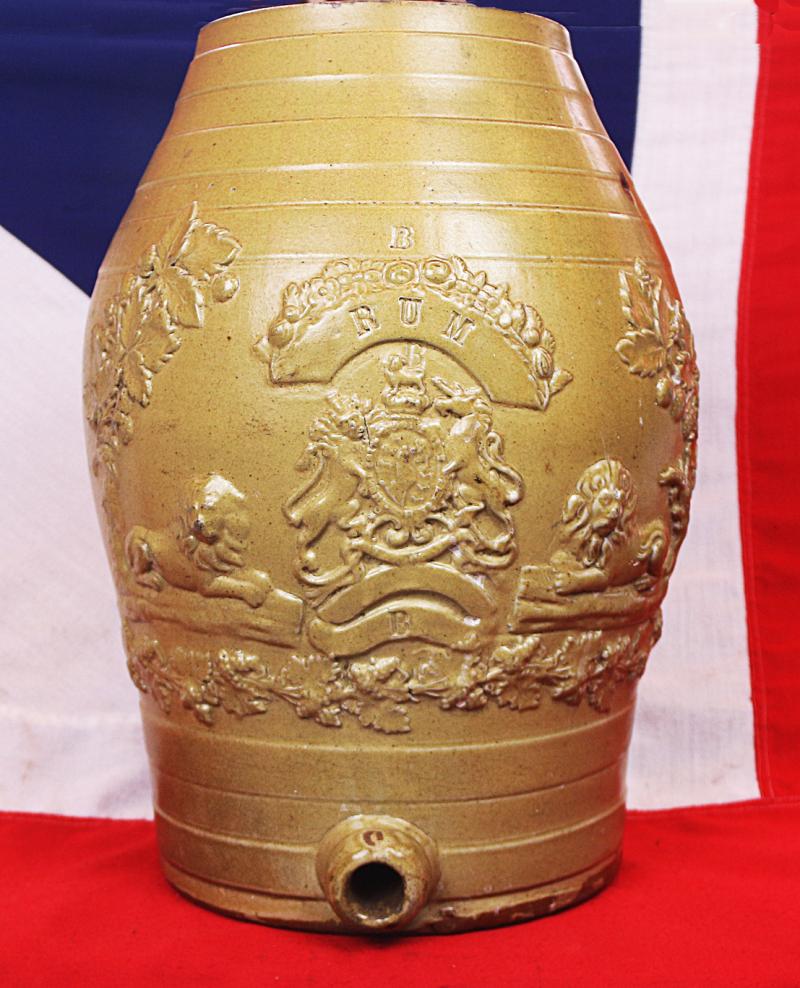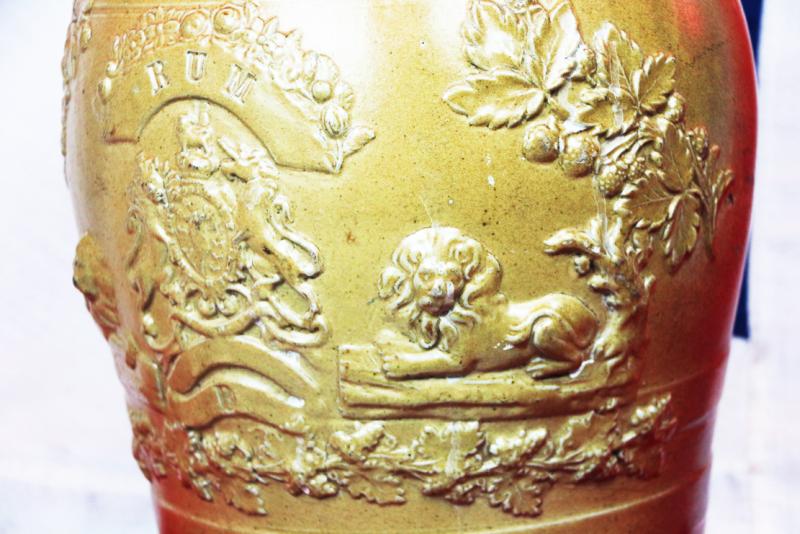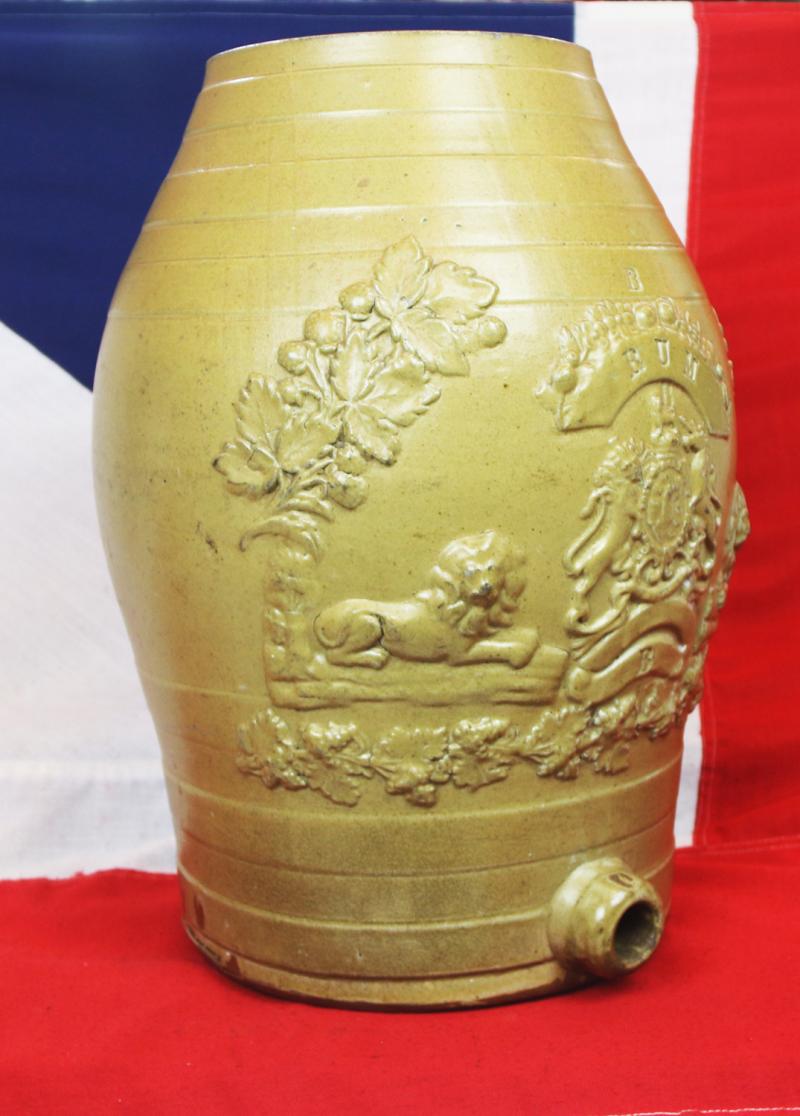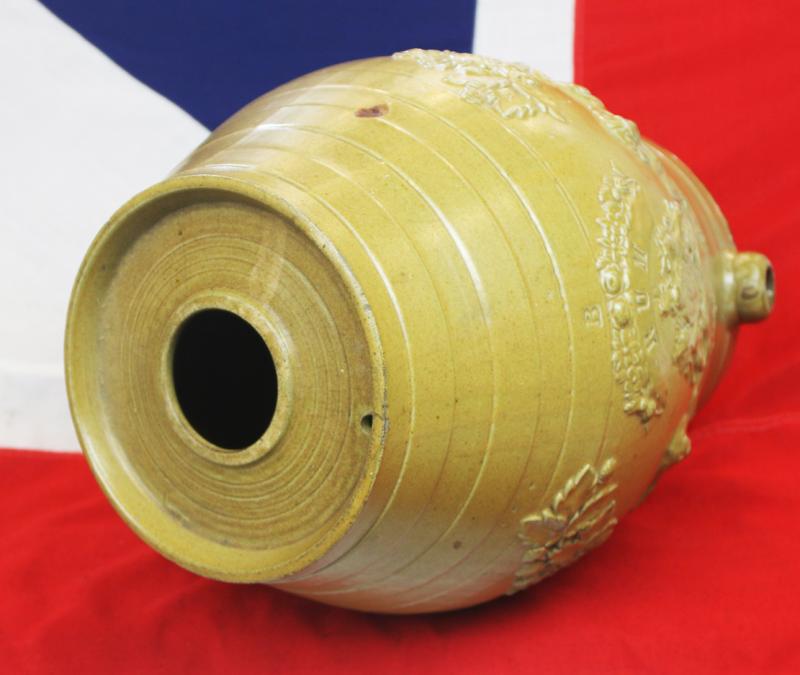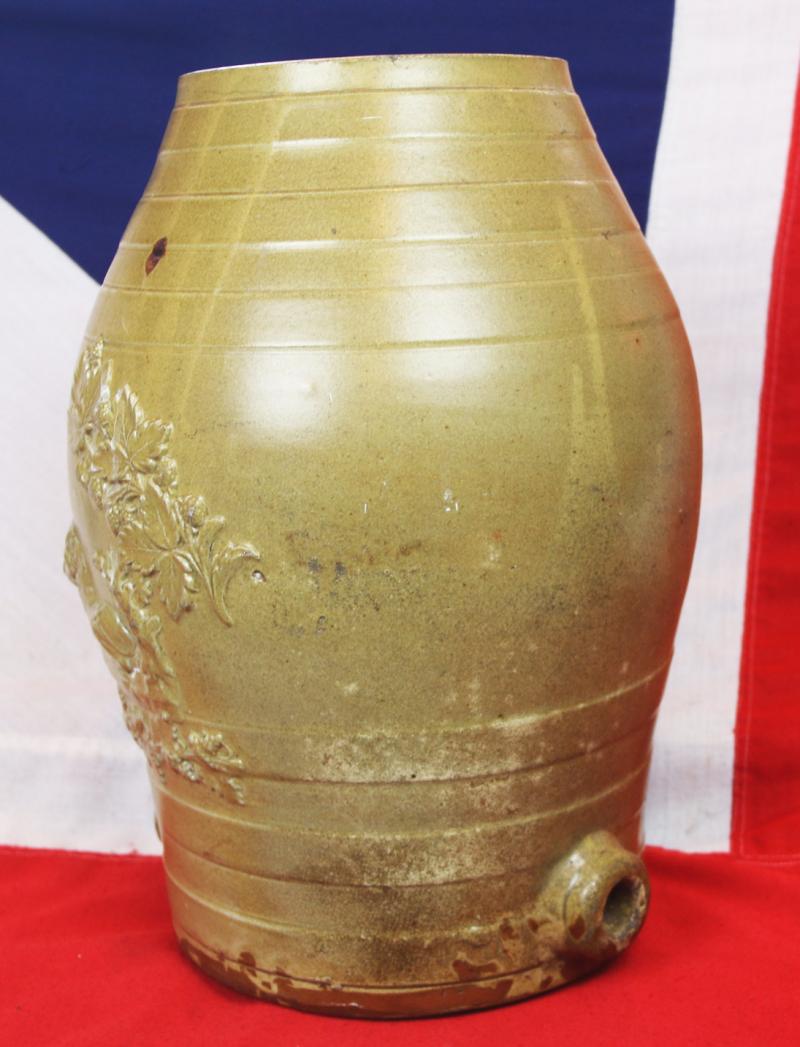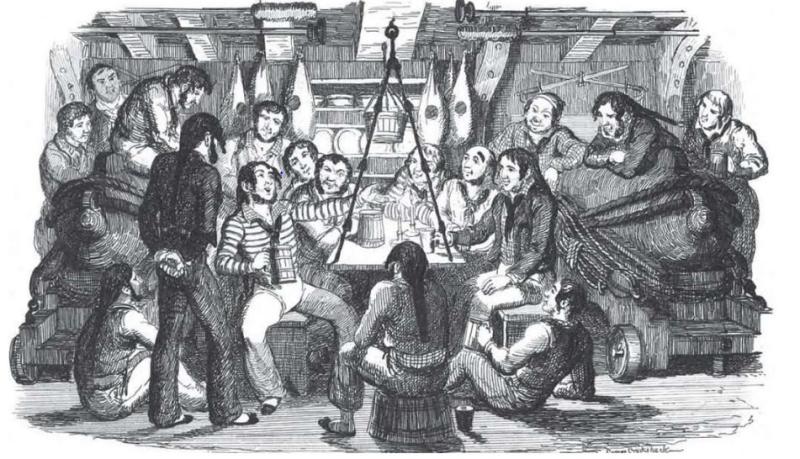A Supurb Trafalger Period Navy Rum, Stoneware Ceramic Rum Barrel, with King George IIIrd Royal Crest And Lions, & 'Fore and Aft' Barrel Tap Apertures
One imagine the Royal Naval officer's availing themselves daily of tots of rum. For meals, the officer's were supplied with decanted Port.
This is a simply superb navy rum barrel, stunningly impress decorated throughout the whole surface. with the Hanovarian royal crest of the Lion and Unicorn with lion surmounted crown, over the Hanovarian garter and shield. To the base of the crest are twin facing lions, in the same seated pose as can be seen at the base of Nelson's Column in Trafalgar Square.
Prior to 1655, a sailor's ration of alcoholic beverage was originally beer with a daily ration of one gallon (i.e. eight pints). This official allowance continued until after the Napoleonic Wars. When beer was not available, as it would often spoil easily, it could be substituted by a pint of wine or half a pint of spirits depending on what was locally available. In 1655, the difficulty in storing the large quantities of liquid required led to beer's complete replacement with spirits, with the political influence of the West Indian planters giving rum preference over arrack and other spirits. The half-pint of spirits was originally issued neat; it is said that sailors would "prove" its strength by checking that gunpowder doused with rum would still burn (thus verifying that rum was at least 57% ABV).
The practice of compulsorily diluting rum in the proportion of half a pint to one quart of water was first introduced in 1740 by Admiral Edward Vernon (known as Old Grog, because of his habitual grogram cloak). The ration was also split into two servings, one between 10 am and noon and the other between 4 and 6 pm. In 1795 Navy regulations required adding small quantities of lemon or lime juice to the ration, to prevent scurvy. The rum itself was often procured from distillers in Jamaica, Trinidad & Tobago and the British Virgin Islands. Rations were cut in half in 1823 and again in half, to the traditional amount, one-eighth of an imperial pint in 1850.
The abolition of the rum ration had been discussed in Parliament in 1850 and again in 1881 however nothing came of it. However, one dark day in 1970, Admiral Peter Hill-Norton abolished the rum ration as he felt it could have led to sailors failing a breathalyser test and being less capable to manage complex machinery.
This decision to end the rum ration was made after the Secretary of State for Defence had taken opinions from several ranks of the Navy. Ratings were instead allowed to purchase beer, and the amount allowed was determined, according to the MP David Owen, by the amount of space available for stowing the extra beer in ships. The last rum ration was on 31 July 1970 and became known as Black Tot Day as sailors were unhappy about the loss of the rum ration. There were reports that the day involved sailors throwing tots into the sea and the staging of a mock funeral in a training camp. In place of the rum ration, sailors were allowed to buy three one-half imperial pint cans of beer a day and improved recreational facilities. While the rum ration was abolished, the order to "splice the mainbrace", awarding sailors an extra tot of rum for good service, remained as a command which could only be given by the Monarch and is still used to recognise good service. Rum rations are also given on special occasions: in recent years, examples included the 100th anniversary of the Royal Canadian Navy in 2010 and after the Queen's Diamond Jubilee celebrations in 2012.
Heavy stoneware, around 8 kilos {guess} size, 17 inches high 13 inches across/
Code: 25216
495.00 GBP

